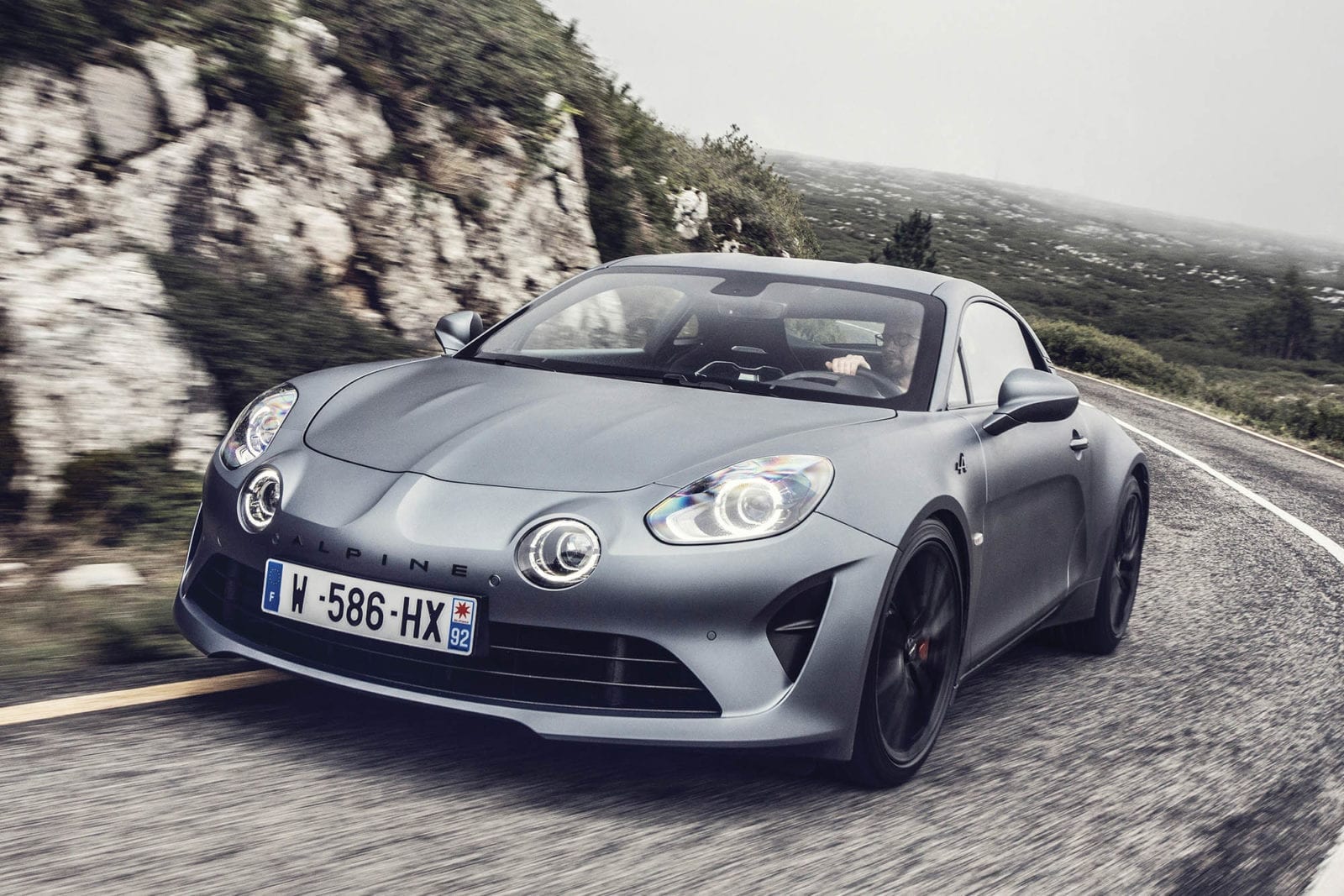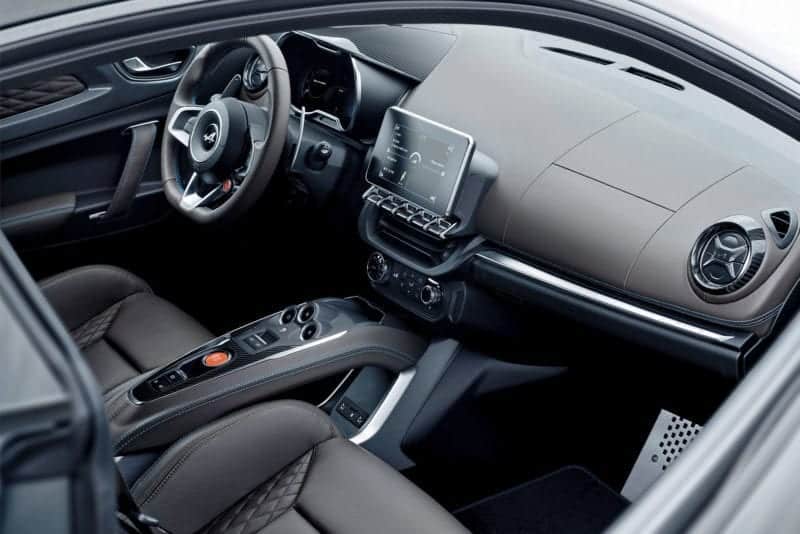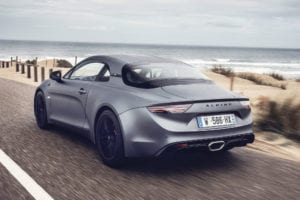Alpine 110S review: What’s in a badge?
Alpine is being super-subtle over its A110 upgrades, says Andrew Frankel

Only the orange calipers in the larger wheels give away the extra power and stiffer suspension of the new 110S
The thing I like most about the new Alpine A110S is not the way it goes, stops or steers, although it is predictably fabulous in all these regards. It is that unless you happen to be a connoisseur of the A110 and, in particular, the design of its wheels, you’ll never know it’s an ‘S’ you’re looking at.
It would have been so tempting to graft a lip onto the back of the engine cover, or deepen its chin spoiler. A simple pair of pipes would have been a sure but subtle way of saying ‘this is the quick one’. Or a badge? One little ‘S’ grafted on the fuel filler cover where the Alpine emblem usually resides? But no, if you don’t spot the bigger wheels, the orange brake calipers, or the 4mm drop in ride height, you’re never going to know.
And for that, I commend Alpine to the skies. Commercially I think it’s an entirely crazy approach, because even the purists who buy Alpines could be forgiven for wanting to signal to the outside world that theirs is the top dog, but three cheers for ignoring that distasteful reality. And welcome to the Alpine A110S.
You might think, given how quiet Alpine is being on the subject of this car, that there’s not much to shout about. Au contraire: the S is more changed beneath the skin than its exterior appearance would suggest. And the real question is whether those changes are, net, for the good or if they have somehow upset the exquisite but always delicate balance of the standard A110.

The interior of the S remains the same, complete with disappointing sat-nav
There is, of course, more power from the 1.8-litre four-cylinder motor. Forty horsepower may not sound like much these days, but it has to be seen in the context of the car’s extreme light weight: increasing the output of an 1100kg car from 248 to 288bhp is going to have a telling effect on its performance, even if there is no commensurate increase in torque as that would push the seven-speed double-clutch gearbox past its certification limit.
But the real focus has been directed at the chassis, the intention being to create a far more taut and objectively capable car. To that end spring rates have gone up by 50 per cent, the anti-roll bars doubled in stiffness. The dampers have had to be firmed up as a result while tyre width goes up a section front and rear. Bigger brakes are fitted, too. One rather telling omission is that this car, which is more closely aimed at the track-day market, still does not come with a limited-slip differential, even as an option. That surprised me.
“There’s more precision, yet the key charms of the A110’s handling have been largely preserved”
The odd bit of stitching and suede-alike upholstery aside, the interior is no different at all, so it’s very much business as usual inside. The navigation and digital radio are as useless as ever, but if you want to fill your mind with weapons-grade trivia about the inner workings of your powertrain, the trip computer is a data-geek’s wet dream.
It doesn’t sound any different to these ears, but you’ll barely be out of your parking space before realising that this car is not the same as a stock A110. Not by a distance. The suspension is now decidedly firm. I’d stop short of calling it harsh, but the car feels tied down on its springs in a way a normal 110 simply does not. This removes one of the key charms of the original and, I’m afraid, to some small but significant extent, makes the ‘S’ feel far more like any other sports car. It no longer breathes with the road, and on the poorly surfaced streets near where I live, lumps and bumps rattle their way through the cockpit in a manner I never experienced in three months living with an A110.
But there is an upside to this. I’m actually not that interested in the additional power: the A110 never felt underpowered to me, and the A110S doesn’t feel overpowered either: both feel about right for the level of grip available. But the S does feel more composed and clearly quicker point to point. There is more precision, yet the key charms of the A110’s handling have been largely preserved. The steering is still as communicative as you’ll find in a car with electrical assistance, the brakes remain perfectly weighted with first-rate feel. And that mid-corner agility, something you only find in very light cars with their major masses centralised and properly located and tuned suspension, survives intact. I was surprised too, given its additional stiffness that its startling cross country pace in wet weather has been preserved, too. I drove it in everything from dry to quite filthy conditions and it remained entirely unperturbed.

Make no mistake, if there were no standard A110 with which to compare it, I’d be raving about this car, but the truth is that right at the poles of the ability spectrum it loses more than it gains. I miss that other-worldly compliance the most, for to me it is the key to the Alpine character and provides something no other car, not even a modern Lotus, has today. But I also felt less inclined to go prodding around the limits of its adhesion, partly because those limits are quite a lot higher, but also because I sensed the ridiculous playfulness of the A110 has been traded for greater poise and grip.
This, then, is a really good car, one whose upgrades stretch far beyond what its almost unchanged appearance suggests. But I’d really only recommend it to those planning on using it extensively on track, and I wonder how many people who are that way inclined will be attracted to the Alpine proposition in the first place. For those who see the A110 as a road car first and foremost, the standard car is not only over £6000 cheaper, for my money it’s a better car, too.
Alpine 110S
Price £56,810
Engine 1.8 litres, 4 cylinders, turbocharged
Power 288bhp at 6400rpm
Weight 1114kg
Power to weight 259bhp per tonne
Transmission seven-speed double clutch, rear-wheel drive
0-60mph 4.4sec
Top speed 161mph
Economy 43.0 mpg
CO2 164 g/km
Verdict Sometimes less is more…

